Getting There and Back & Transportation …
First penned in 2013 and most recently updated May 17, 2022 …
You’ve read about many of the things you can do ahead to prepare yourself for your trip. We’ve even given you some reference points for making your air and ground reservations. But what about the actual getting there and returning and your transportation at your destination(s)?
GETTING THERE AND BACK & TRANSPORTATION
Many of you will be flying to your destination, or at least to the take-off point. Let’s start with …
At the Airport
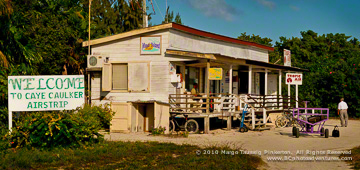 Get to the airport early. We arrive at least two hours before our departure time, three for International flights. It may seem like a lot, but you don’t want to find that you are being processed or competing with a gaggle of sports, student, or tour-group travelers, especially with the added security involved these days. It can slow down that process immeasurably and cause great stress and frustration. That’s the last thing you want to start off your trip.
Get to the airport early. We arrive at least two hours before our departure time, three for International flights. It may seem like a lot, but you don’t want to find that you are being processed or competing with a gaggle of sports, student, or tour-group travelers, especially with the added security involved these days. It can slow down that process immeasurably and cause great stress and frustration. That’s the last thing you want to start off your trip.
Like so many people these days, we have already checked in online 24 hours before departure. Exceptions include a number of overseas destinations where tests with negative Covid results and other documents are required, necessitating airport check-in. Be sure to carry your CDC cards with you, but store them apart from your passports. Those with dietary restrictions or wants will have already notated that.
These days, many travelers use their smart phones to download the little QR Code (Quick Response Code) that enables one to easily check in. Those who need to have paid for their checked luggage, so now, after going up to the check-in kiosk and making sure frequent-flyer numbers are on the boarding passes, all anyone has to do is drop off the bags and head for security.
I tuck our boarding passes inside our passports, so that when I open them up for security, the boarding pass lies across the top half of the passport above our mug shots. That way, TSA or other security guards can easily see the match-up in our names.
Don’t you love consistency? It seems, as many of us know, that consistency is a foreign concept when heading through security. Take off your belt; leave it on. Shoes? probably take them off. Jackets and coats off and in the bin. Over shirt off; well maybe you can keep in on. Take your quart bag of 3-oz liquids (I actually double-bag mine, as cabin pressure will make some bottles leak) and put it in one of the bins; or not! One thing that Arnie and I always do ahead is remove watches and jewelry. We try to do it in the car before we park it, or in the case of taxis or friends, before they park us. It saves that hassle in line and doesn’t call attention to whatever you are wearing. I wear beads rather than metal for necklaces and earrings. One less thing to have to remove.
Patience and a positive attitude will go a long way to making your life easier heading through security. Remember, they are in control, regardless of the country.
I carry my passport with boarding pass in my teeth when preparing to go through security. That way, it is never unattended (SNARL!). Arnie and I always joke that security is probably the least secure place, at least in terms of getting things stolen.
Make it easy to remove your laptop. An outside pocket of your carry-on works for this. We always carry lots of camera gear, and it is rare that anyone asks to check our bags. They are used to people like us, at least usually, so be prepared to open this or that bag, another reason to arrive at the airport early.
I always put the item that is the least important (clothing) through the belt first. My most important piece (camera equipment and laptop) goes last, just before I head through the X-ray or scanner. Arnie usually goes through security first, and I bring up the rear. That way, the chances are one of us will be waiting for those items to appear on the X-ray belt. And by the way, our camera equipment never gets checked. It stays with us at all times.
Never miss an opportunity. In other words, go when you can; don’t wait until you need to. Taking advantage of any loo is always sensible. One never knows when the next opportunity will present itself.
If you are a member of an airline club lounge, that is great. For those who are not, some credit cards, American Express, for example, offer lounge passes that work at many, but not all, airports. In AmEx’s case, it’s called Priority Pass. If you have an upper-grade credit card, call their concierge service and see what they have.
On Board
Before boarding, I make sure that the things that I want accessible are in my briefcase that is usually a small roller bag. Neck pillow, noise-reduction head phones (with both mono and stereo plugs), tablet, passport, pen for filling out customs forms, snacks, etc. so that I don’t have to disturb anyone to get at the overhead bin.
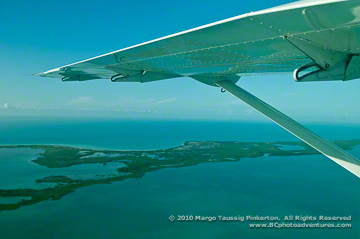 It isn’t always possible, but if I can find a position where my feet are somewhat elevated, that really helps on a long flight.
It isn’t always possible, but if I can find a position where my feet are somewhat elevated, that really helps on a long flight.
You have probably all seen those articles in the inflight magazines that show you exercises to do while in the air. Do them, as they keep the circulation active.
And while you’re at it, check out the airport diagrams so you have an idea of where you’re headed upon landing.
I make it a point to hydrate, hydrate, hydrate before a flight. It seems to cut down on swollen ankles. When the flight attendant comes around, I ask for two drink items, water, and juice. That way, I get twice as much liquid that should hold me until their next pass.
Keep track of time, and head to the head (nautical and aviation term for the loo). Going through customs in a foreign country can take quite some time, and they never, ever, have a loo between the plane and the customs gates. Even if you are making a domestic connection, your current flight may have gotten delayed, and you may find you are making the quarter- or even half-mile dash from one end of the airport to the other, with nary a moment to spare for a stop.
Money
 If you don’t already have currency of the country you are visiting, there are ATMs at most airports these days. Find one, and use your ATM card to get some local currency. Check on the Internet, but most people think this is the cheapest way to exchange currency in most countries. This presumes, of course, that you have let your credit card company and bank know you are headed off and may be making withdrawals from unsual places. Many card companies say you do not need to do this, but I always like to play it safe.
If you don’t already have currency of the country you are visiting, there are ATMs at most airports these days. Find one, and use your ATM card to get some local currency. Check on the Internet, but most people think this is the cheapest way to exchange currency in most countries. This presumes, of course, that you have let your credit card company and bank know you are headed off and may be making withdrawals from unsual places. Many card companies say you do not need to do this, but I always like to play it safe.
There is usually no reason to carry a lot of cash on your person. Withdraw enough so that you aren’t cutting it too tight but not so much that you expose yourself to risk.
Picking up Your Car
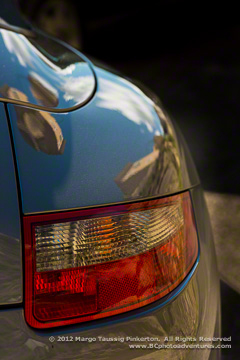 You’ve checked in at the Information booth to make sure you understand the way to your rental car. This can be daunting if you are not conversant in the language of your host country. The Information booths are generally very patient with newly-arrived visitors.
You’ve checked in at the Information booth to make sure you understand the way to your rental car. This can be daunting if you are not conversant in the language of your host country. The Information booths are generally very patient with newly-arrived visitors.
If you have brought your GPS with appropriate foreign maps, turn it on now. It takes a while, and there is nothing more frustrating than trying to find a safe place to pull over while your GPS powers up.
When you have signed your paperwork and picked up your car, presumably a tad less conspicuous and more affordable than the one here, go around the car with your digital camera and photograph all dings and scratches. Double check the fuel level. Also, check tires. We have occasionally gotten a rental with less-than-stellar treads or tire pressures.
Then let the rental-car company know about the issues. Your camera will put the date and time stamp in the metadata, assuming, of course, that you have adjusted your time zone for where you are now. Later, if there is a problem, you have proof that the offending marks predated your driving the car.
And don’t laugh. Make sure you know how to start the car. Arnie and I rented a lovely car last summer and got the giggles when not only could we not figure out how to start it, but the rental car personnel couldn’t either. As it turned out, we had a car with one of those new keys that is activated by mere proximity! We all got a really good laugh out of that one. Also, you will need to know how to turn on/off the headlights, high beams, windshield washers, and emergency brake!
While you’re at it, check the washer fluid level, and make sure you know where all the controls are. Not all rental cars come with manuals these days, so you may be up a creek once you leave the rental place!
When you return the car, do another set of photos as well as one for the dash, showing mileage and gas level. Arnie and I often find we have to drop off a car before the rental car office is open. We were once charged an exorbitant fee for late turn-in, high mileage, and lack of petrol in the car. Fortunately, we could contest it with our credit card company, showing how often we had bought gas and how unlikely it was that we had taken it for a joy ride and left it empty upon return.
Before you leave the rental-car company, take the time to ask for directions to get you into or out of the city. It will make your life so much easier if you are in unfamiliar territory.
If there are two of you, the better navigator takes the co-pilot’s seat, and if the pilot/driver knows what is good for him or her, any directions should be followed!
Heading into the City sans Car
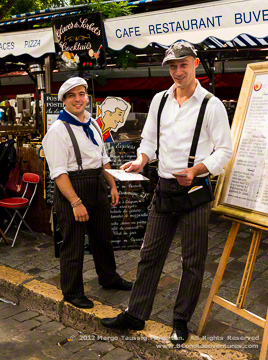 Beware of taxis. They are notorious in many foreign cities for overcharging and taking you all over Hell’s Half Acre to get to your destination. Always ask what the fare is ahead of time, and that same Information booth above can probably give you a good idea of what the fare should be. So will your guide book. Thesed days, there is usually an official taxi stand where the fares are set and you will not get gouged.
Beware of taxis. They are notorious in many foreign cities for overcharging and taking you all over Hell’s Half Acre to get to your destination. Always ask what the fare is ahead of time, and that same Information booth above can probably give you a good idea of what the fare should be. So will your guide book. Thesed days, there is usually an official taxi stand where the fares are set and you will not get gouged.
There are some great bus services that are clean, fast, affordable, and easy. AirFrance, for example, runs buses from Charles de Gaulle into Paris. Comfy and easy. There is usually good train service. Again, your guide book can give you excellent hints.
Before you left, you probably also read what TripAdvisor and other travel sites said on the subject.
For those who don’t wish to rent a car, there are usually in-country special passes that make travel so much more affordable. They may be for bus or train service. Europe has Eurail passes that go between countries. Check it out if you are traveling in Europe.
Don’t forget that if you have a smart phone that works where you are, you have another source of GPS. Before you leave, you might consider getting the app Waze, now owned by Google (think Google Maps), that works in many countries. Because the reports are in real time, as opposed to your GPS that relies on a police or other report to get fed into the system, you can be almost instantly warned of traffic snarls, accidents, gas stops, eateries on the road, and even warnings of where the next vigilant gendarme may be lurking.
Make sure you have your phrase book handy for when you have to talk to a local person. One of the first things that is good to know how to say, aside from the normal pleasantries, is, “Please speak slowly. I only speak a very little …”
The linguistically challenged may want to keep or The Wordless Travel Book: Point at These Pictures to Communicate with Anyone (also has a Kindle version) or The Universal Phrase Book: A Picture Dictionary for International Travelers at the ready.
So, whether you take Trains, Planes, and/or Automobiles, have fun, and don’t be afraid to ask for help or directions. Regardless of the country you’re in, whether at home or overseas, most people are happy to help.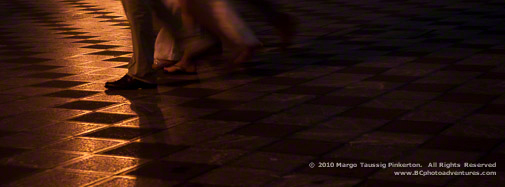
In another blog, we’ll talk about On the Road, but first…
Next: More Travel Tips – Part 3, Traveling with Photo Equipment
If you enjoy our blog(s) …
Please SUBSCRIBE. It’s easy to do by clicking on the appropriate link at the top of the right column.
Comments on the blog are always encouraged and welcome.
We also hope you will LIKE this and SHARE this blog with those interested in photography by clicking on the buttons below. We also hope you will check out these links:
Great travel advice. It’s very helpful to have a trusted source of information for navigating around. I will return to this regularly.
Ron,
What is useful information if not to share and hopefully save others some angst and troubles. I am so glad you found this useful for future travels, and we always appreciate feedback. Thank you!
Take care,
TBC
We find your tips very useful and appreciate them. Alice and I had an interesting experience in renting a car in Florence, Italy. We had the car, a stick-shift Fiat, delivered to our hotel. We loaded our bags in and drove off. After a few miles, we decided to pull over to make sure we were heading correctly. When I went to pull out of the parking spot, I couldn’t for the life of me figure out how to get the car in reverse. Fortunately, there was just enough room to exit the space by going forward. We pulled into the next gas station and, although the attendant didn’t speak English and we don’t speak Italian, we made our quandary known and he graciously demonstrated how to get the Fiat in reverse. As you suggest, it definitely pays to make sure you know how to operate the car before driving off.
Ed (and Alice),
I am so glad you have found these useful. Your Fiat story is a case in point. Thank you for sharing it. It is these stories, drawn from the experiences of others, that really speak to our audience.
Take care, and see you soon (for Cuba, Her People & Culture),
TBC
I enjoyed reading this!
Johanne,
I am so glad. I hope Part 1 and Part 2 gave you some useful hints.
Take care, and thanks for writing,
TBC